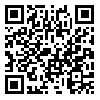Volume 7, Issue 2 (Journal OF Welding Science and Technology 2022)
JWSTI 2022, 7(2): 139-150 |
Back to browse issues page
1- , mkarbasi@mut-es.ac.ir
Abstract: (8431 Views)
One of the most dangerous industries is welding and inspection. Risk assessment is a rational procedure for determining the probable repercussions of prospective incidents on people, materials, equipment, and the environment. The risk assessment identifies the efficacy of selected control mechanisms and offers essential data for risk reduction, risk management, control system enhancement, and risk response planning. The current study identified 13 dangerous parts of the "hot crack" and "cold crack." The discovered dangers were then ranked by expert academics in the welding and inspection industries using the best worst fuzzy method. A fuzzy method has been developed to address risk uncertainty and minimize decision inconsistencies. The findings indicate that the primary risk factors for weld metal hot cracking in order of importance are "frozen structure, separation, high tensile stresses in the weld metal, material composition, bonding, preheating, high flow intensity, high-thickness workpiece, and weld pollen form." And "the quantity of hydrogen in the weld metal, high tensile stresses, a vulnerable structure, and a relatively low temperature" are all factors in cold welding of weld metal. The study's results may be used to guide the selection of solutions, remove the primary dangers, and establish security policies in the welding and inspection industries.
| Rights and permissions | |
 |
This work is licensed under a Creative Commons Attribution-NonCommercial 4.0 International License. |




